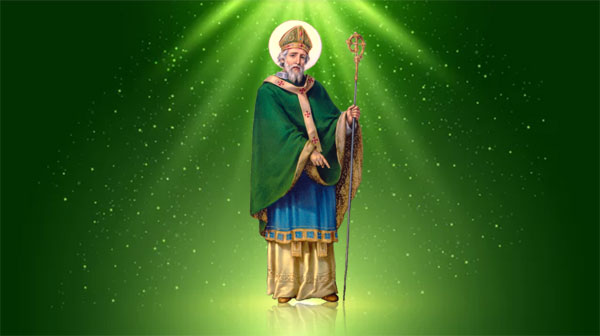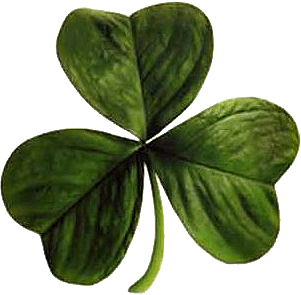Delve into the rich tapestry of St. Patrick's Day, exploring its fascinating history and uncovering the origins that have shaped this beloved celebration. From the legendary tales of St. Patrick himself to the evolution of traditions that paint the day in shades of green, join us on a captivating exploration that goes beyond the surface.
Discover the roots of this cultural phenomenon, learn about the symbolic significance of shamrocks, and unravel the historical threads that weave together the festive spirit of St. Patrick's Day. Whether you're a history enthusiast or simply curious about the origins of cherished traditions, our journey through time awaits you!
This holiday is celebrated every year on March 17th, honoring the Irish patron saint, St. Patrick.The celebrations are largely Irish culture themed and typically consist of wearing green, parades, and drinking. There are a number of traditions to consider that are associated with St Patrick’s Day.
Before we delve into the history and origin of St. Patrick's day, lets first try to get some idea about St. Patrick himself, and how his name got associated with this festival:
Early records suggests that he was a Roman citizen (Entire UK was under Roman rule at that period of time), and bore the name Maewyn Succat. He was brought as a prisoner to Ireland. He somehow managed to escape, and changed his name to Patricius (Patrick) meaning father figure, and returned to Ireland as a priest. He was successful in converting a large mass of people into Christians, who were from the Druid culture then.
The second half of the 4th century saw the birth of Patrick, and there are no common agreement on his date, or his place of birth. Some say that he was born close to 290 AD, while others are sure that AD 373 it is. People are equally divided on his place of birth, some claim it to be Scotland, while others are sure that he was born at England, then under Roman rule, so Roman England. His was originally known as Patricius, but slowly it became Patrick.

There is more agreement, however, on his lineage. There is general agreement that he was the son of a British (then under Rome) army officer, and was being brought up as any other regular kid in England. However, misfortune struck him and he was abducted by pirates, who later sold him to slavery in Ireland. He spent 6 years in slavery, and then he had a dream from God, instructing him to escape and return for the sake of propagating Christianity. He onboarded a getaway ship to escape. He did escape Ireland, for England, and then ultimately to France. He came under the tutelage of a monastery, under the aegis of the Bishop of Auxerre. He spent over a decade, about 12 years, learning about Christianity, becoming a bishop himself. It is then he heard the inner voice, urging him to come back to Ireland for spread of Christianity. He took the blessings of the Pope, and returned to Ireland thereafter.
Patrick converted a large number of pagan druids (Gaelic Irish) to Christianity, travelling far and wide, with an indomitable zeal. Frequently he gave gifts to men in power, but accepted none from any. His success is practically unrivalled, and frequently, he used to convert men of power first, before he went to the masses. The druids were not quite happy about this, and did arrest him a few times, but with God’s grace, he escaped every single time. He developed an organization of clergies, appointing local Irishmen, which furthered his cause manifold.
It was not long before he attained legendary status, and have many legends associated with him as well. For example, legend has it that he used the three leaves of the shamrock (the most popular icon of the festival) to explain the trinity of the Father, the son and the holy spirit to the masses. Legend also has it that he had driven out all the snakes out of Ireland to the seas, where they drowned. It was an eventful and colourful period of twenty years of work for St. Patrick. He left for the heavenly abode on the 17th of March, 461 AD. This day is celebrated as Ireland’s baptization day and has been always celebrated. Thus, the saying ‘We all are Irish on St. Patrick’s Day’ have come into practice.
The leprechaun the shamrock and the triple goddess Brigit are all associated with the celebration of the day and are symbols for the same. Learn more about : St. Brigit and St. Patrick and St. Patrick's legends | Leprechaun,Shamrock and Blarney's Stone.
However, the customs and traditions we see associated with the festival today, kicked in from the early 18th century, and gradually shaped themselves to what we see today.
St. Patrick's Day is celebrated on March 17th every year to commemorate the death of St. Patrick, the patron saint of Ireland. The day is observed with parades, festivals, and other cultural events in many parts of the world, particularly in countries with a large Irish diaspora. The holiday has a rich history that dates back more than 1,500 years.
St. Patrick's Day has been celebrated as a religious feast day in Ireland for more than a thousand years. The first St. Patrick's Day parade took place in New York City in 1762, and the tradition has since spread to many other cities around the world.
Today, St. Patrick's Day is a celebration of Irish culture and heritage. It is a day for people to wear green, drink Guinness, and celebrate all things Irish. The day is a testament to the enduring legacy of St. Patrick and the rich cultural traditions of Ireland.
1962 was the year when the New York St. Patrick’s Day parade took place for the first time. The colour green got synonymous with the festival only from 1798 onwards. Prior to that, Blue was the official colour of the celebration, also found in ancient Irish flags and royal courts. During the rebellion, the Irish choose to wear green in defiance of the British red, and sang the song – The wearing of the green -. It was all the way to go green henceforth.
Don’t be fooled by the green beer though, it was a much later addition, more of a marketing tool by a beer company. Infact, only in the late 20th century did Ireland repealed the law of keeping everything shut for the day, including cafes, pubs and bars. N the 1980ies, Budweiser gave a major marketing push, that equated the day’s celebration with gulping down of beer (green beer mostly) in large quantities. So beer and has not much to do with history of the day.
For history of St. Patrick’s day celebration in the USA (United States of America), the credit goes to the Irish immigrants. Some cities of USA had a large number of Irish immigrants, who frequently had gained a lot of political and monetary power as well. These communities took out large parades and processions celebrating St. Patrick’s Day in grandeur, and over the course of time, it became a secular holiday meant for celebrations, parties, dancing, parades, and of course, anything green, including beer.
The first St. Patrick’s day parade in USA can be traced back to 1737, in Boston. A few decades later, New York City followed in 1762, with her own Patrick’s day parade. Since 1962, Chicago has followed a unique tradition to mark the celebration of the festival, it colours its river to, you guessed right, green. Whether you are Irish or not, whether you are a Christian or not, everyone wears green to celebrate the fun festival in Unison, wearing shamrocks in their lapel.
Corned beef and cabbages are the preferred dishes, along with green beer. Later, Ireland too, adopted these customs, primarily for the benefit of tourism industry development.
Thus, it is clear that modern day celebrations of St. Patrick’s Day has little to do with the saint or the his history, and have developed into a full filled event day. You can find more about Modern Day St. Patrick's Day Celebrations here.
